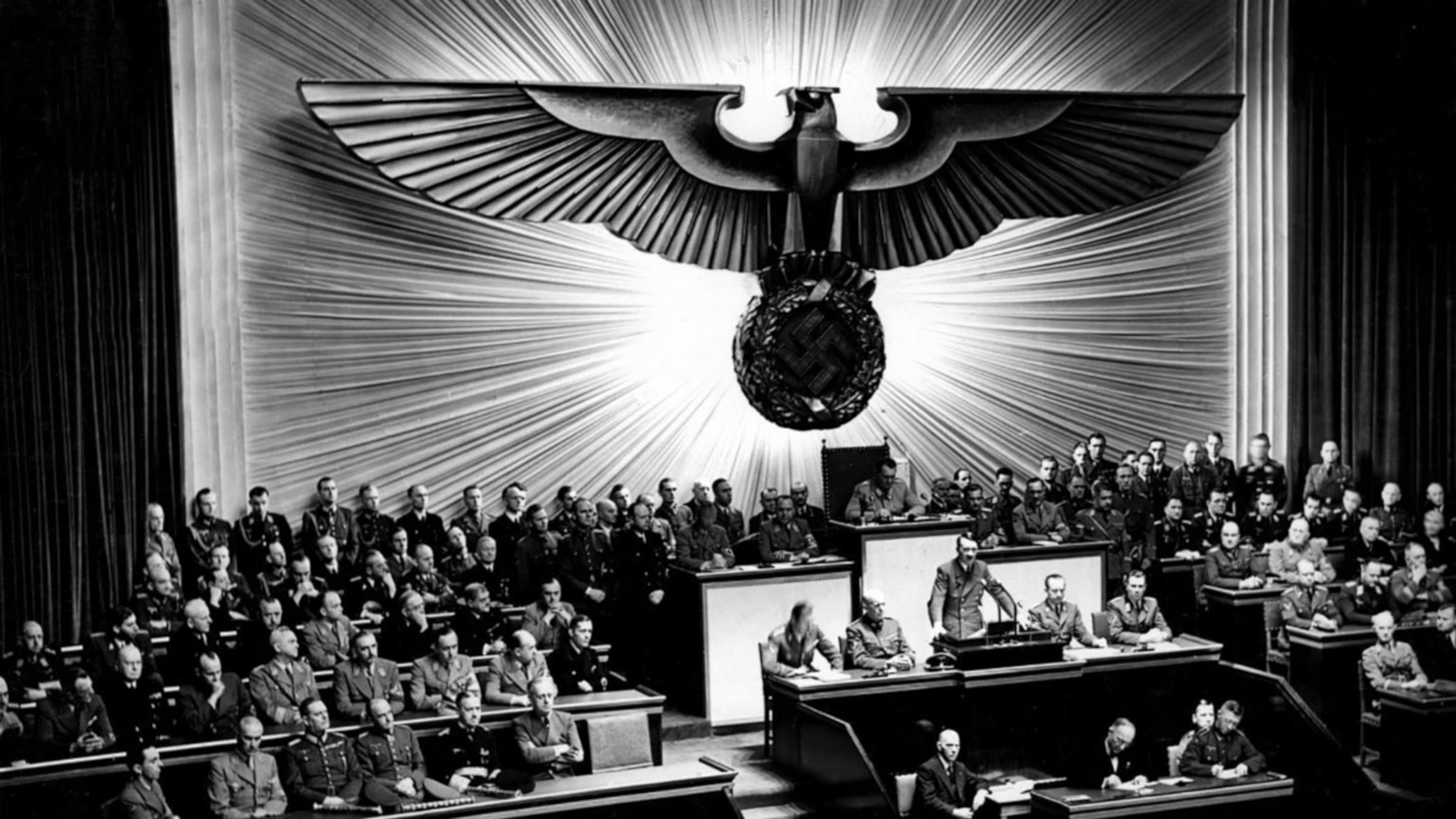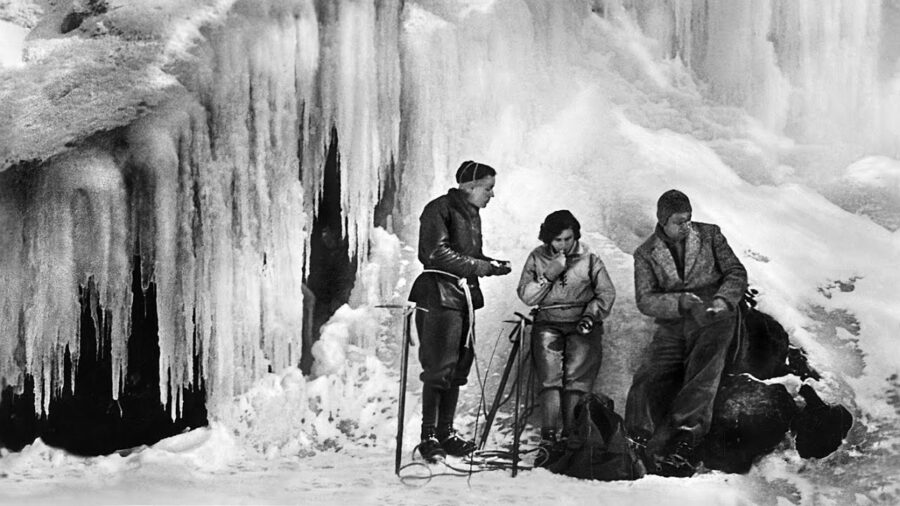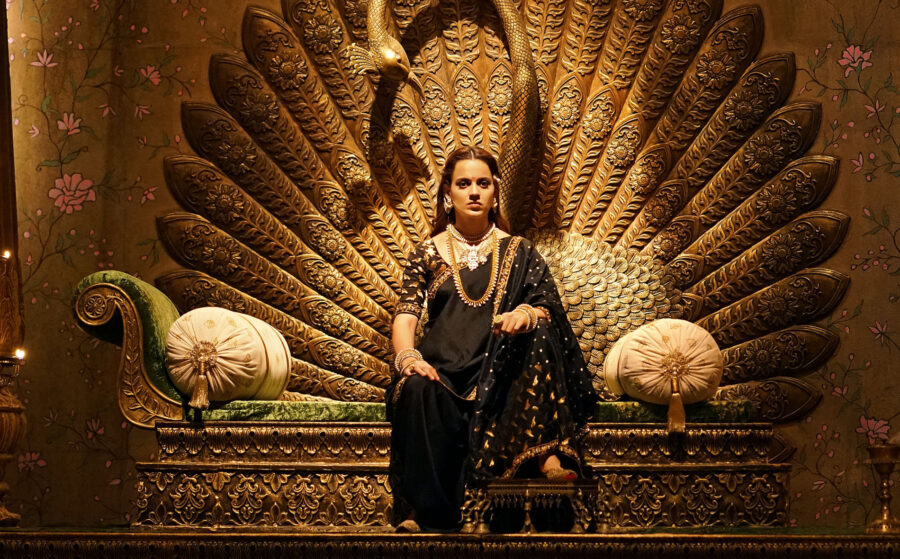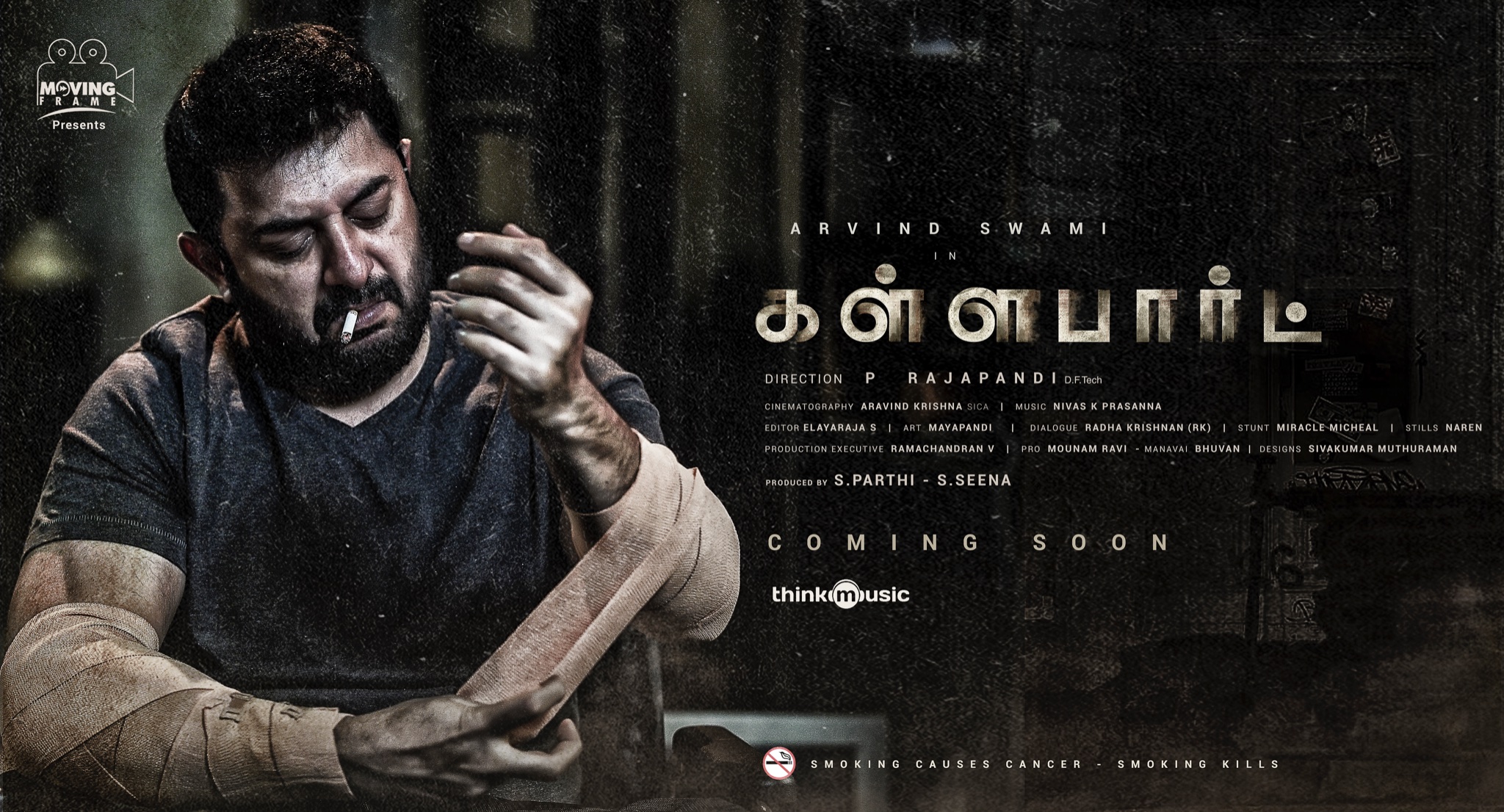You cannot make a film set in the 40s about people who dream of obliterating the Third Reich in a movie theatre, and ignore Leni Riefenstahl. In Tarantino’s Inglourious Basterds, White Hell of Pitz Palu crops up. One of the numerous silent mountain films of the 1920s starring Riefenstahl. Riefenstahl would soon transition into her own prolific filmmaking career, the woman behind the most famous Nazi propaganda films, a talent Hitler recognised and admired. It’s also widely regarded that Leni Riefenstahl made two of the greatest documentaries ever – Olympia, hours of breath-taking footage of the 1936 Berlin Olympics, shot with an eye for the human body as the undying spirit, celebrating speed, height and strength, zooming in on Jesse Owens warming up or waltzing underwater with the camera. The Triumph of the Will is the notorious other. While Riefenstahl was twice cleared by post-war tribunals, her eye is the cerebral force behind Nazi propaganda filmmaking, more than even Goebbels, certainly the more enduring image. A name drop is Tarantino being restrained in his most unrestrained film. Sit him down and he’ll probably sing paeans to the talents of Leni Riefenstahl.
Susan Sontag would have none of it though. In her essay titled “Fascinating Fascism”, Sontag details and destroys the various misconceptions and the mythical aura surrounding Riefenstahl. About Triumph of the Will, she writes, “The most successfully, most purely propagandistic film ever made, whose very conception negates the possibility of the filmmaker’s having an aesthetic or visual conception independent of propaganda.”

In Amanda Lee Koe’s novel Delayed Rays of a Star, Leni Riefenstahl is one part of the triune along with Merlene Dietrich and Anna May Wong, in a historical fiction emanating from the only photograph featuring the three in 1928 Berlin. Koe dedicates whole chapters to Riefenstahl’s filmmaking process, her critique of modern filmmaking and self-examination of her mutating legacy. In the novel, Koe’s reimagined Riefenstahl prefers the aesthetics of a Spielberg, a Lucas or a Cameron. She denounces the French New Wave and Italian neorealism. And this seems consistent with her own cinematic fervour, the mountain scaling epics of her fiction like the aforementioned Pitz Palu or the celebration of limitless physical abilities of the human body in Olympia or the ascendancy of a cult figure and Nazi ideology in Triumph of the Will. Both these works, while maintaining her eye for form, also inform her propaganda films.
Koe’s Riefenstahl is scathing of Sontag and picks the latter’s essay “On Style”, published nine years prior to “Fascinating Fascism”: “The Nazi propaganda is there. But something else is there, too, which we reject at our loss. Because they project the complex movements of intelligence and grace and sensuousness, these two films of Riefenstahl (unique among works of Nazi artists) transcend the categories of propaganda or even reportage.” She picks on Sontag’s own words about her filmmaking – “The greatest artists attain a sublime neutrality.”

Do they? Hindi films in the post-Modi era have transcended categories of propaganda or even reportage. While Riefenstahl is credited as the producer of her films, her close association with the Nazi party was never a secret and the party was very much involved in their financing. In the case of the BJP and Bollywood, it is a more dangerous but durable marriage – one of co-option. By whatever means, the ruling Indian government has co-opted Hindi cinema to produce content that drives its ideologies forward while keeping its name out of the dotted lines. And no individual has been more artful with this process than Kangana Ranaut. There is Akshay Kumar, but a singular brand of viciousness pervades Ranaut’s process, in addition to her off-screen meltdowns that lend a certain transparency that Kumar rarely entertains. Kumar suffered from another problem that Kangana circumvented. The audience was already ambivalent about him – his comedies and action dramas worked; his talent was never in question – but they were rarely taken seriously. In contrast, Kangana had built a foundational trust with the audience, coming across as the calming zephyr before unleashing her zeitgeist.
Queen changed the shape of her tryst with the Indian audience, calling upon her unmatched talent to play roles that were messy but relatable, feminism couched in an air of refinement, problematic but introspective and so on. It wasn’t the I-smoke-therefore-I-am brand of feminism. Kangana’s many self-titled films took the road less travelled to explore their characters who weren’t lovable, neither were they stylish. They came from cities of all tiers. They were more like the people watching them and it’s easy to succumb to the complexity on display, not to mention Kangana’s enviable skills. Queen released roughly two months before Modi took office and in six years, Kangana established herself as the Riefenstahl-like figure who made it hard for watchers to separate the woman from the actress and art from propaganda.
Take two of her recent, under-discussed films. Both written by women (Ashwini Iyer Tiwari and Kanika Dhillon respectively). In Tiwari’s Panga, Ranaut plays Jaya, balancing a government job along with her housewife duties, and playfully reminiscing about her days as a kabaddi star for the Railways team. The playfulness turns serious when she is teased a comeback by the men in her house – husband and son. The film is no doubt a rousing victory for Jaya who was stifled at her prime and hints at a sparkling change in gender roles in the Indian middle class. At another end of the spectrum is Judgemental Hai Kya. It’s about a seemingly unstable woman battling a mental health crisis and traumatic childhood, later gaslit by a serial abuser-murderer. It’s an appealing narrative to the urban millennial psyche that has always related to this experience but is now able to see this reflected in mainstream cinema. The third act of the film uses the RSS bogeyman of Ramayana where Ranaut morphs into Sita challenging her ceaseless agni-pariksha to burn the wife killing Ravana.
A recent article examined ‘Why did women vote for Hitler’ and cited long-forgotten essays written by women that answer the question. It posited that while men fell for the cult of personality that is Hitler and his ideology, women were moved by the solutions proposed to poverty and social distress that followed the Great War. “I am one of millions who thought Hitler had all the answers. We saw only the good things, we didn’t know bad things were to come”, said Riefenstahl. But what is happening with a personality like Kangana is a more troubling trajectory. On-screen, Kangana has deliberately taken an identifiable, even if unlikable persona that has won her fans. The challenge for an audience is to distil the woman out of her roles and see her for the hatemongering celebrity weaponised by the most powerful Indian government or erase the fascist woman from their minds and see her as the powerhouse talent charting her own path in mainstream cinema, unlike anyone before her.
For a country that rousingly voted in a majoritarian government, the choice in this distinction is obvious. For a generation, she could be the feminist icon that fits their narrow confines. Koe’s Riefenstahl writes, “Don’t be impressed that I am a woman. Be impressed that my work broke ground I didn’t even know I was breaking.” Kangana on the other hand, I suspect, knows exactly what she is doing. Cinema is too intimate an art, the audience seeing themselves or their aspirational selves on screen, seeking knowledge or validation. Mainstream cinema thrives on the charisma of its stars and when they begin to play everyday roles in addition to the larger than life, art attains supreme power. Like the Nazis, the neo-fascist Indian government cottoned on to this with the vigour of a hunting maneater. Riefenstahl, at least, downplayed her contributions compared to her colleagues and tried to course correct in the post-war years but Kangana is unhinged. Her sister Rangoli Chandel admitted that Kangana occasionally composes her tweets, and tweeted the idea of cancelling the next general elections, even openly called for genocide (“they might call us Nazis but who cares”), before her account was suspended. Kangana is at once Modi’s stand-in cult of personality off-screen and the ideological solution espoused in her works on-screen, the merits of which are difficult to argue against. Kangana’s art is already fascinating while her fascism grows wings each day with miraculous pace.
Susan Sontag wrote, “They (Fascist aesthetics) exalt two seemingly opposite states – egomania and servitude. It glorifies surrender”. No wonder that Kangana’s upcoming project is a biopic of J Jayalalithaa. While historians and political analysts are still grappling with Amma’s complicated legacy, we will probably be sold a vision of strength, an all-powerful being. History repeats, for the worse.



